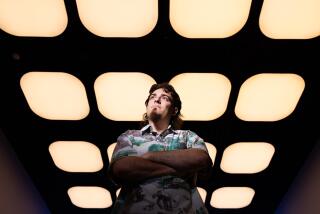THE LOCKHEED-MARTIN MERGER : Lockheed’s Flight Plan
- Share via
Lockheed Corp.’s roots go back to the earliest days of aviation. Like all of Southern California’s aerospace companies, it grew dramatically during World War II. But it needed a federal bailout in the early 1970s and suffered the collapse of its commercial airliner business in the early ‘80s.
1913: Auto mechanic Allan Loughhead (pronounced Lockheed) and his brother Malcolm build and fly their first aircraft, a seaplane, over San Francisco Bay. They establish Alco Hydro-Aeroplane Co.
1916: After Alco fails, the brothers set up the Loughhead Aircraft Manufacturing Co. in Santa Barbara with designer Jack Northrop. Later, the brothers adopt the name Lockheed, apparently to avoid having their original name mispronounced.
1927: Introduction of the Vega plane, which Amelia Earhart uses in a solo flight across the Atlantic.
1929: Allan Loughhead sells his interest in the company after losing control to Detroit Aircraft Corp.
1932: Detroit Aircraft files for bankruptcy and sells Lockheed to Boston bankers for $40,000.
1933: The Electra passenger plane becomes a popular model, flown by Pan American World Airways and Northwest Airlines.
1938: Company enters military business after designing the Hudson bomber for the British Royal Air Force in only five days. More than 3,000 are built.
World War II: Lockheed builds nearly 20,000 planes for the military, including the P-38 Lightning interceptor and the C-69 Constellation transport. Famed design and research plant in Burbank, the “Skunk Works,” builds prototypes of the nation’s first jet fighter plane.
1953: Missiles and space division created to make satellites and submarine-launched missiles.
1959: Electra turboprop commercial airliner is introduced, but two planes crash shortly after rollout and production is halted two years later. In separate incidents, 175 Shooting Star fighter jets sold to West Germany crash, killing 85 pilots.
Early 1960s: Company designs and builds huge transports, including the C-130 Hercules and C-5 Galaxy, as well as the U-2 spy plane.
1969: Loss of $32 million posted; company tells the government that four military projects are in danger unless it gets a $700-million bailout.
1970: Launch of L-1011 TriStar passenger jet, which is plagued with equipment problems and poor sales.
1971: Government saves Lockheed after Congress agrees to guarantee $250 million in loans.
1975: Congressional investigators find that Lockheed had paid $25.5 million in bribes to foreign officials, including former Japanese Prime Minister Kakuei Tanaka.
1976: Chief Executive Daniel Haughton and President Carl Kotchian resign amid bribery scandal. Former New York Stock Exchange President Robert Haak is brought in to restructure company as interim CEO. Later, Vice President Lawrence Kitchen is named president and chief financial officer. Roy A. Anderson becomes new CEO.
1981: Poor sales lead to the demise of TriStar program. About 250 were built.
1983: Tanaka is sentenced to four years in jail for accepting $2-million Lockheed bribe.
1988: Company closes factory in Watts, built in the aftermath of the Watts Riots.
January, 1990: Investor and Texas billionaire Harold Simmons launches fight to win control of the board following the company’s poor financial performance.
December, 1990: Simmons’ $1.6-billion takeover offer is rejected.
December, 1992: Company acquires General Dynamics Corp.’s F-16 fighter division in Texas for $1.5 billion.
August, 1994: Merger agreement with Martin Marietta announced.
Sources: Lockheed, International Directory of Company Histories, Everybody’s Business
More to Read
Inside the business of entertainment
The Wide Shot brings you news, analysis and insights on everything from streaming wars to production — and what it all means for the future.
You may occasionally receive promotional content from the Los Angeles Times.










